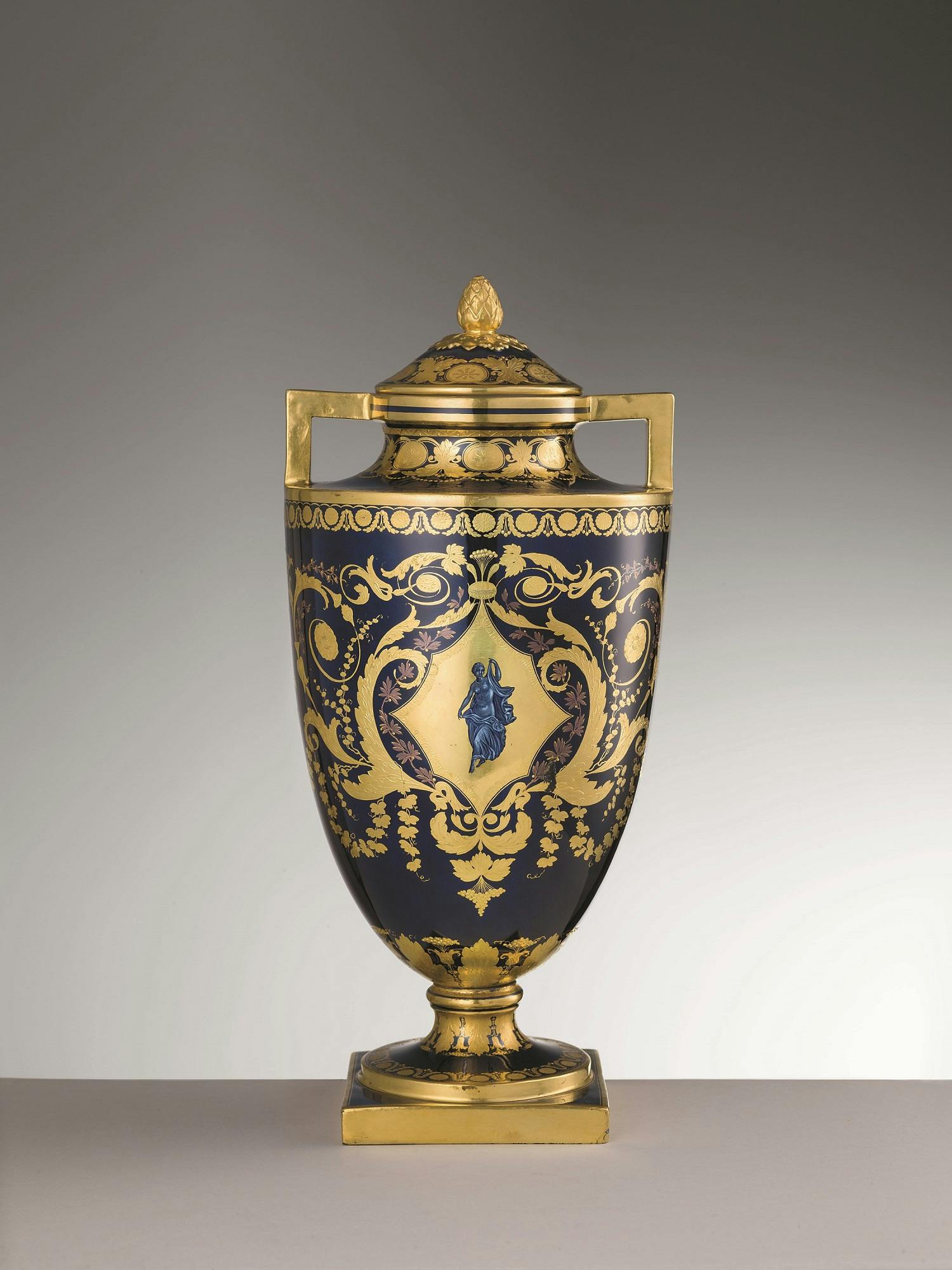Two-handled vase with lid
Imperial Porcelain Manufactory, Vienna
The classicist inspiration of this vase emerges both from its shape and from the central decoration depicting a Maenad taken from the engravings in Le Antichità d’Ercolano esposte (1757-1792, vol. II, Le pitture antiche d’Ercolano e contorni incise, 1760, tab. 99) and set in an elaborate frame with swirls executed in gold relief. The antiquarian taste that emerges in the form of our specimen can be traced back to the conception of the chief modeller Anton Grassi active at the Imperial Manufactory during the direction of Conrad von Sorgenthal (1784-1805), a period in which there was an increase in the production of sculptural groups in line with neoclassical taste, however, mainly attributable to Grassi’s invention. He became a master modeller in 1784 and made a study trip to Florence between 1792 and 1794, where he copied some works in the Grand Ducal collections, but it was in Rome and Naples that he came into contact with ancient art.
Due to the purity of the line, the model of our vase was very popular in the production of Viennese manufacture in the neoclassical period. The most significant variations are in the choice of decoration, which besides the one presented here, boasted a repertoire of both bouquets and portraits. Moreover, this type had to be presented in pairs and, indeed, our specimen also had a pendant as revealed by the inventories of Palazzo Pitti between 1816 and 1840, but in those of 1863 it was already missing.
The dark blue that entirely envelops the vase is inspired by the blu de roi of the Sèvres Manufactory, whose services reached the Viennese Court in 1758 as gifts from the King of France, Louis XV, to Empress Maria Theresa and again in 1770 on the occasion of the marriage of the latter’s daughter, Marie Antoinette, to the Dauphin of France, Louis XVI. An example is the Tête-à- tête coffee service inv. Silver with 1911 estimate no. 90 from the Porcelain Museum. However, the intensity in the rendering of blue on our vase and the invention of the gold relief decoration is due to the Imperial Manufactory chemist Joseph Leithner, who was awarded a prize by Conrad von Sorgenthal in 1792 for this particular shade of blue, which acquired the name Leithner Blau in his honour.
